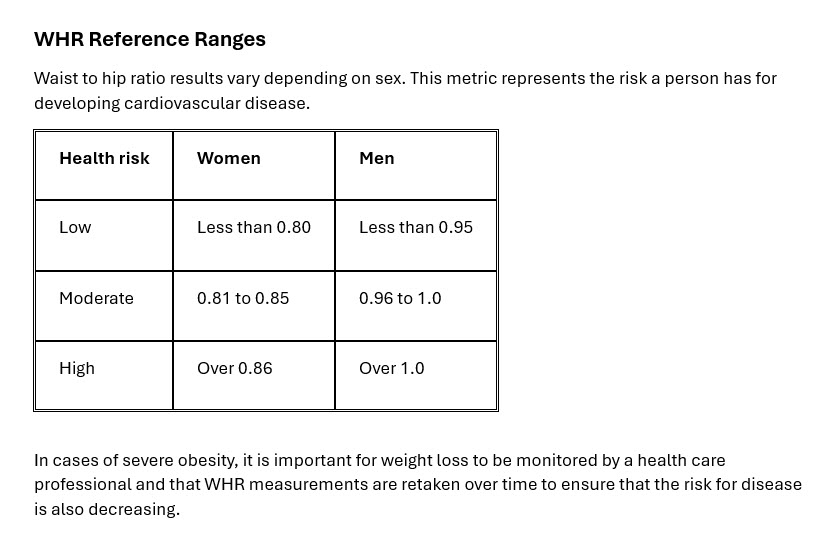Managing fitness health through measurement

Today there are many smart devices for monitoring fitness health and physical activity.
I will show you how to calculate and use a few key metrics to understand and get a baseline of your fitness health.
We start with the basics as our guiding key metrics.
These key metrics will help you set up and start your fitness program ensuring results. If you work by these metrics and track them over time with a consistent effort to dial-in nutrition and fitness activity, you will be rewarded with sustaining changes and results.
- Resting heart rate: Take heartrate right after you wake up to get your RHR baseline. This metric is an indicator of cardiovascular fitness and heart function. A lower RHR is usually better because it means that the heart is supplying more blood to the body and brain, with less effort.
- Basal metabolic rate (BMR): The minimum number of calories a person’s body needs to sustain life and all normal fuctions. This is critical to baseline so you get enough nutrition based on your body’s needs, activity levels, and other key factors.
Be sure when you are exercising to consume enough nutrient-dense food and to make sure your caloric intake is well above your BMR. Baselining this metric ensures your new fitness program is both safe and effective.
Waist-to-Hip Ratio (%): WHR is a medical health indicator of heart disease risk. This is a metric that guides all body composition goals and needs. For target ranges based on male or female gender (sex assigned at birth), see reference table below.
Body Fat Percentage (%): This metric measures the percentage of total body weight that is composed of fat tissue. Getting to and maintaining a healthy body fat percentage based on gender, age, and height is vital to quality of life.
Below this section is a link to a Body Fat Percentage calculator that will guide you with your inputs and provide specific information with key targets for how many pounds (or kilograms) of body fat weight you should strive to lose or gain (case of being underweight).
Body Mass Index: BMI is a calculated measure of body fat based on height and weight, used to determine if an adult is underweight, healthy weight, overweight, or obese.
For some people, such as those who might be shorter with more muscle mass, this metric may be mis-leading and indicate obesity when in fact, the person isn’t obese. For this more complex metric, I highly advise working with a personal trainer and/or a certified nutrition coach.
- Resting heart rate: Take heartrate right after you wake up to get your RHR baseline. This metric is an indicator of cardiovascular fitness and heart function. A lower RHR is usually better because it means that the heart is supplying more blood to the body and brain, with less effort.

Fitness Health Calculators
Source: Calculator.net/Fitness and Health

